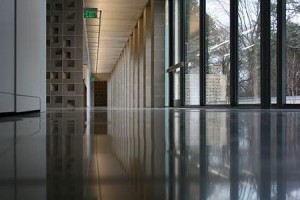3 Options for your Concrete.. this is the Second option.
Option Two: No Overlay
Stain or Dye? Acid-Based Stain does more than simply add color. Rather than produce a solid, opaque effect like paint or colored coatings, stains permeate the concrete to infuse it with rich, deep, translucent tones. Stains react chemically with the calcium hydroxide in concrete. If the concrete is exterior and the surface of calcium hydroxide has been worn away, then a thin overlay can be applied to achieve a great look. Stains are more marbling and translucent then most dyes. Stains also leave a residue which has to be cleaned thoroughly and dried thoroughly before the sealer application.
Dyes are the latest buzz in the decorative concrete community. Their ease of use, extensive palette, and vibrancy of color are creating a wave of popularity that is gaining momentum. Dyes are nonreactive and impart color by penetrating concrete. Dyes are much smaller in particle size than chemical stains, thus allowing for easier penetration and color saturation while leaving less residue on the surface. The small dye particles fill the pores of the concrete and are very hard to remove, making dyes nearly as permanent as stains. Because there is virtually no residue, minimal cleanup is required, greatly speeding the application process. Solvent-based dyes tend to be more monotone and uniform in color. The downside to dyes is that they penetrate very fast, leaving little room for error during application. Also, they are not UV stable, so most manufacturers recommend indoor use only.
Rick LaFata
(573)-216-0930
rick@customconcretedesign.info
Custom Concrete Design


